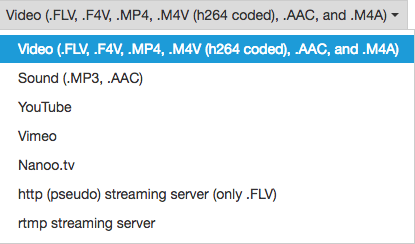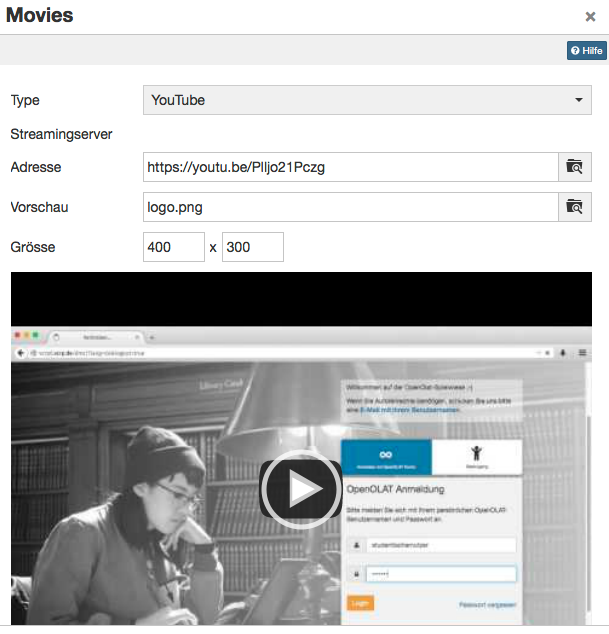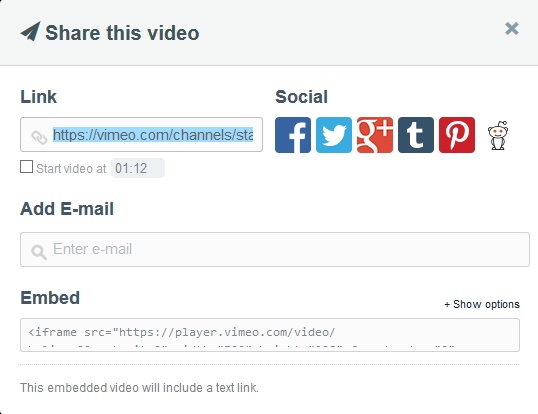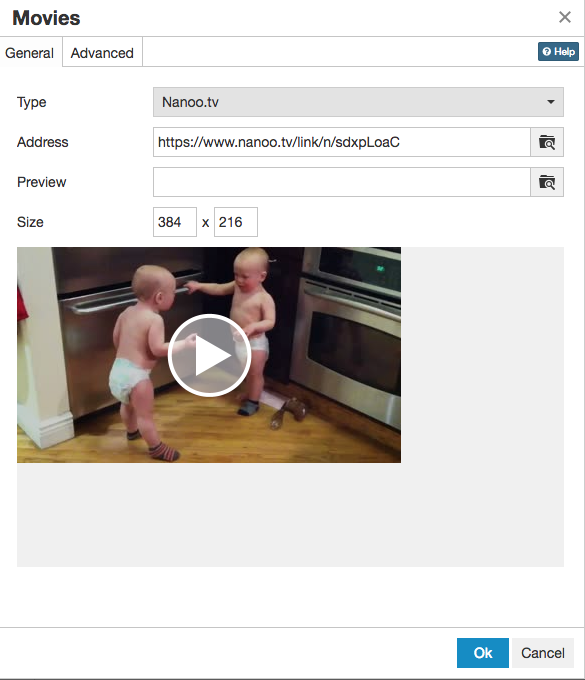You should always use the plugin "Add/edit video" if you need to embed a video into a "Single Page" course element. It accesses OpenOLATs integrated media player, which has its advantages.
1. The player automatically detects the format, as long video and audio tracks are encoded correctly.
2. The player detects whether the user accesses the video with a HTML5 enabled and codec compatible mobile browser. If so, videos will receive a HTML5 tag and can be viewed without difficulty on iPad or similar devices.
This chapter provides you with the key information for using the "Add/edit video" plugin in TinyMCE (Supported are: FLV, MP4 (h264 coded), and AAC).
Recommended format
The mp4 container using the H.264 video codec and the mp3 audio codec is widely established and accepted. Current releases of Win IE, Firefox, Chrome and Safari are capable of playing videos encoded in such a way. The video learning resource requires the mp4 format.
These are the options available to you:
| Description | |
| Video: Embed a video with specific encoding. | |
| Sound: Embed a sound file without video. | |
| YouTube / Vimeo / Nanoo.tv: Embed a youtube / vimeo / nanoo.tv video. | |
| http: Stream a flash file from a specific web server type. | |
| rtmp: Stream a flash file from a specific streaming server. |
Video (.FLV, .F4V, .MP4, .M4V (h264 coded), .AAC and .M4A)
This setting is best suited for integrating videos in OpenOLAT. Use the following container formats for uploading videos:
Format container | Container description | Description |
|---|---|---|
.FLV | Flash Container | Flash videos containing video and audio tracks, defined by Adobe |
.F4V | No container, but a pure video format without sound, defined by Adobe | |
.MP4 | MPEG-4 | MP4 video and sound format, defined by MPEG (Moving Picture Experts Group), various codecs |
.M4V | MPEG-4 | MP4 video format containing H.264 video codec as well as either MP3 or AAC audio codec; iTunes format |
You can either add the link to the video in the address field or upload the video.
To ensure optimum compatibility, best use a MPEG-4 container with a H.264 encoded video track and either an AAC or MP3 encoded sound track. This provides you with either the .mp4 or the .m4v file extension - but keep in mind that not all devices can play a .m4v file. We advise against using flash movies, as many portable devices such as e.g. the iPad generally do not support flash movies.
Sound (.MP3)
The player only offers limited functions when embedding mere sound files. Available functions are start, stop and the progress bar, but other functions such as full screen are missing. You can either enter the link to a mp3 file in the address field, or upload the audio file. Established browsers all fully support playback of mp3 audio files.
YouTube
YouTube movies are linked directly, thus bypassing the upload selection field. Videos are directly embedded this way.
Use the direct link to the video, available under "Share".
Vimeo
Vimeo movies are also linked directly. Enter the link to the desired movie in the "Address" field.
The direct link to the vimeo video can be found when following the "Share" link in the homepage.
Nanoo.tv
Videos from the Nanoo.tv platform can be linked directly. A Nanoo.tv account is required to use and display the videos.
The URL can be used to control whether the video starts automatically or not. Therefore the URL behind /link/ has to be adjusted accordingly.
- start automatically with "n": https://www.nanoo.tv/link/n/sdxpLoaC
- start manually with "v": https://www.nanoo.tv/link/v/sdxpLoaC
http (pseudo) streaming server (only .FLV)
This functio allows you to integrate flash movies with the .flv format. Once a movie is correctly exported at its origin, an index is added. Utilizing this index, users can jump to any spot at will without completely loading the movie. This is not a proper streaming though, as it would require an appropriate streaming software installed on the server.
Enter the server address in the field "Streaming server". "Address" contains the address of the actual movie.
rtmp streaming server
This function enables you to use a flash streaming server. It requires a particular protocol, the so-called RMTP - Real Time Messaging Protocol. Various products are available to be employed as streaming servers, e.g. from the Akamai network. This protocol, developed by Adobe, permits the transmission of the video from the server to the flash player. It's common though to encounter problems with port settings and firewalls.
HTML5 Video
OpenOLAT also supports HTML5 videos embedded into a html page with external tools. This requires the author though to add different alternative video formats to the html tags (such as m4v and ogg) and file those in variable resolutions in OpenOLAT, if necessary.
In this case, OpenOLAT supports pseudo streaming through progressive download respectively range requests.






